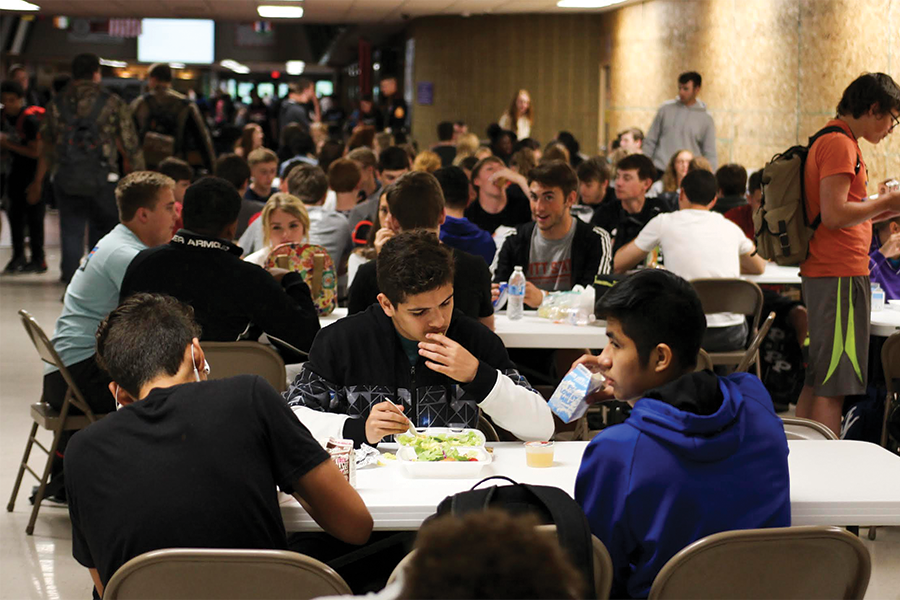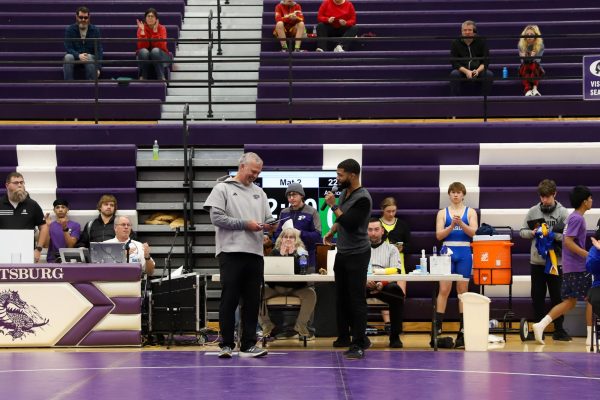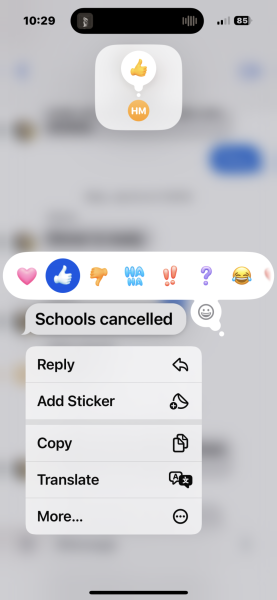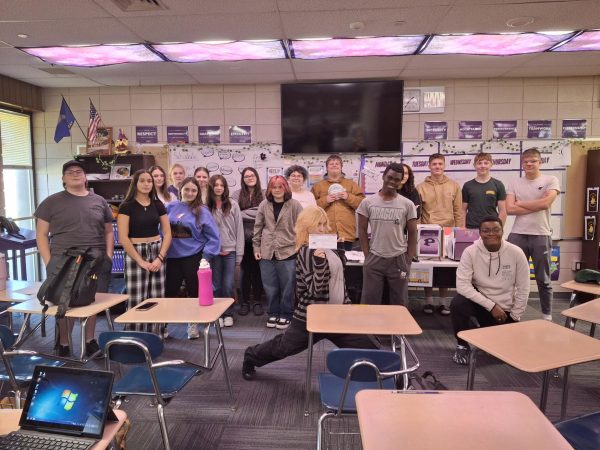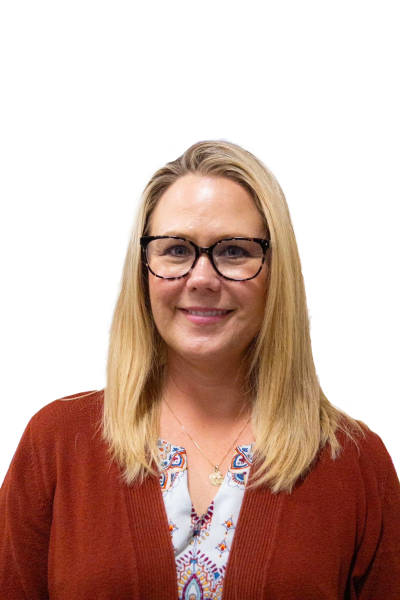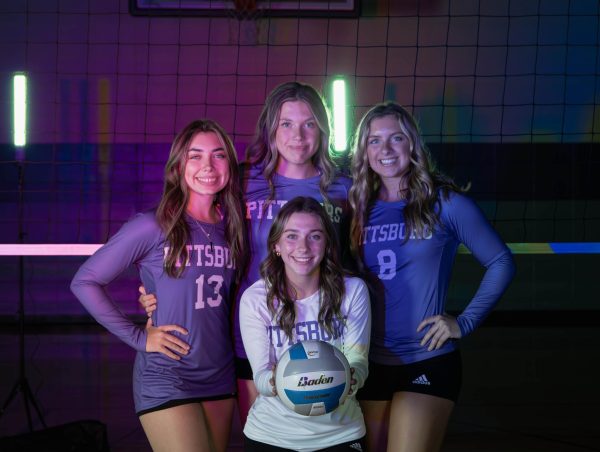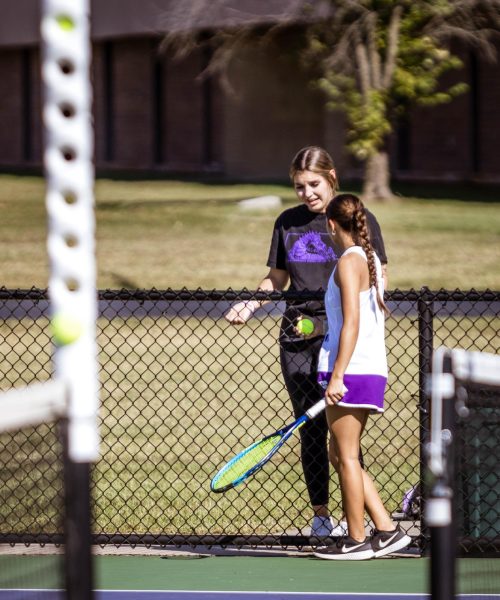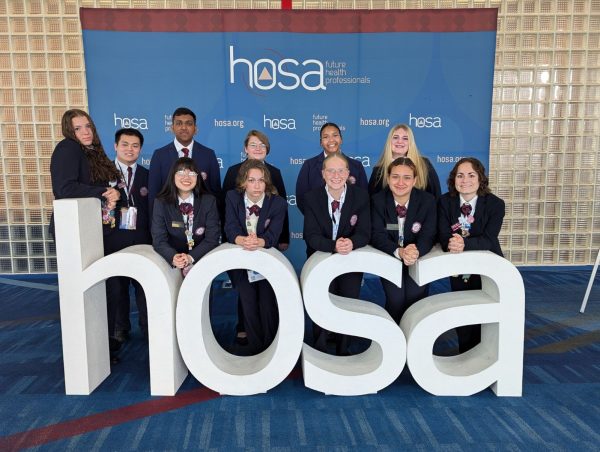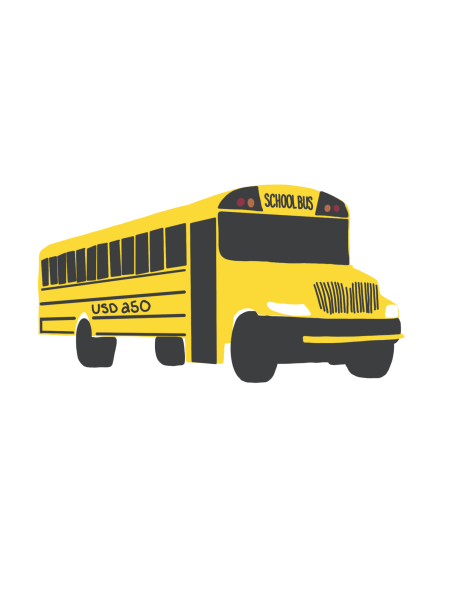Powering through the changes
Students adapt to a new schedule
Photo by: Aubrey Bolinger
Students eat lunch at tables set up specifically for Power Hour. Students have a 50-minute break to eat lunch and meet with teachers.
As the lunch bell rings, freshman Blake Harrison walks past the lunch line and makes his way to a classroom. There, he completes his schoolwork while waiting for the lunch line to die down. Harrison has changed his lunch routine to adapt to a new, recently implemented lunch system.
On April 16, the administration changed the lunch schedule. Instead of having a study hall hour in the morning and three different lunch periods, study hall and lunch was combined to pilot a 50 minute academic lunchtime called Purple Power Hour (PPH).
“It helps students out with their homework. It gives you a little brain break so that you’re not completely stressed with everything,” Harrison said. “You don’t feel too overwhelmed. You can go get help from teachers if you need help.”
Harrison hopes to see more food options next year as well as faster lunch lines.
Allowing students to practice independent time management and have easier access to the help they might need were the main objectives in mind when implementing this schedule, according to principal Phil Bressler.
“We want to provide opportunities for kids to start learning how to manage their own time within the school day,” Bressler said. “We wanted to give teachers the opportunity to work with students who are most in need and not be distracted by 12 or 13 other kids who have to be in [the classroom] because we assigned them.”
While implementing PPH, the administration anticipated and faced some obstacles such as space management and the lunch lines being longer than they were previously.
“Some of the [bigger] obstacles, though [included], food service. The concern there about if too many students bring their lunch and our numbers drop, that [food service] would have to take a loss and we can’t afford that,” Bressler said. “Custodial, how clean are we going to be able to keep the building? How tidy are students going to be taking care of their own lunch mess? Both of those have been pretty positive.”
Bressler explains that the results of this year’s PPH pilot will determine whether the school will continue with this schedule in the fall.
“There are going to be changes. There are going to be kinks. When we open the new cafeteria in the middle of next year, things are going to change as well. Hopefully that’s going to be a positive change,” Bressler said. “We’re thinking about how [we can] make life better for a student. What are some things that we can do to make it easier for kids?”
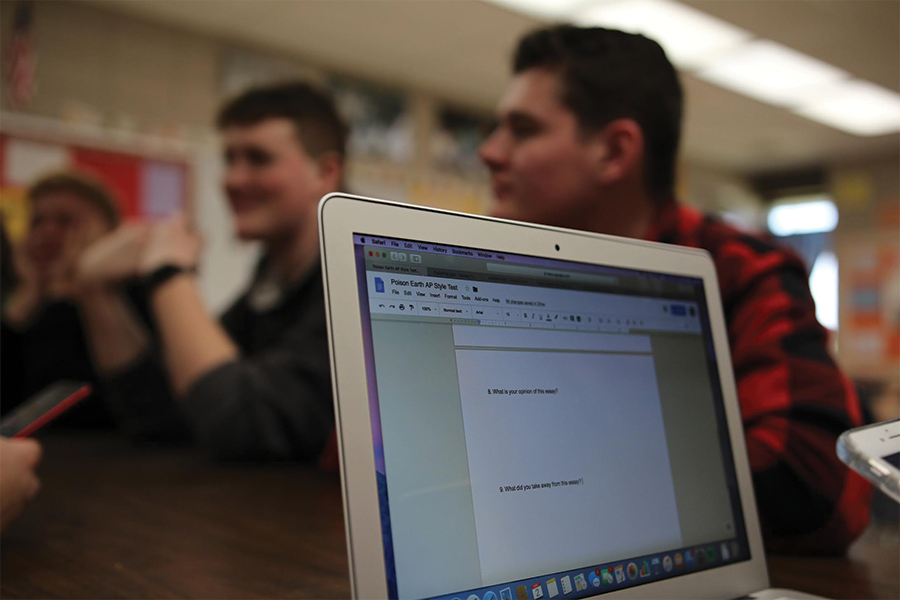
Students take advantage of Purple Power Hour to work on assignments in Angela Pallarés’s classroom.
Since all 900 students now have the same lunch hour, food service manager Terri Feagan and her team have been experimenting to see what works best to serve the students and staff.
“We’ve tried and figured out we need a lot of stuff ready to go. I think it went a lot quicker. We’re figuring it out now how to get the kids through faster,” Feagan said.
Though the serving times have changed, the routine in the kitchen remains similar to the way it was before PPH.
“It hasn’t made a whole lot of changes for us. We worried about it a lot more than we should’ve,” Feagan said. “One thing that we’ve worried about is not being able to cook. We cook in between lines so the food is fresh. We’re still doing that so all of our worries kind of went away.”
However, Feagan reports that there are some issues.
“We don’t know how much to fix because we never know when the line is going to end. Our count has gone down some because kids are bringing their food from home and so it’s just kind of hard to determine that,” Feagan said. “Our biggest problem is getting in there and wiping counters down because it kind of bothers us. People are spilling food all over. The milk cooler, we have to stop the kids from getting in there and trading out the milk.”
Feagan believes the serving process will become much smoother next year when the renovations to the cafeteria are made.
“The kitchen is going to be a lot more open. We should have more [food] choices. We’ll have three checkouts and they can go down both lines so we’ll have six lines instead of just the two we have now,” Feagan said. “Plus we’ll have the new cafeteria where the kids can sit too and that should seat at least 300 or more kids instead of all being out in the hallways.”
Alongside the food service, social studies teacher Jason Susnik has acclimated to the new lunch schedule.
“I’d say I have more flexibility. As a teacher, I like having the ability to have my kids in here for 50 minutes. Thus far I like seeing the teachers in the hallway seeing the kids walking around,” Susnik said. “It’s a nice little break from the normal routine. It’ll only get better next year with the new cafeteria and hopefully kids can get food quicker.”
Your donation will support the student journalists of Pittsburg High School - KS. Your contribution will allow us to purchase equipment and cover our annual website hosting costs.

I am involved in Band, Debate, Tennis, FCA, HOSA, Math Club, and Book Club, Spanish Club, Guitar Club. A fun fact is that he loves making music and he...


